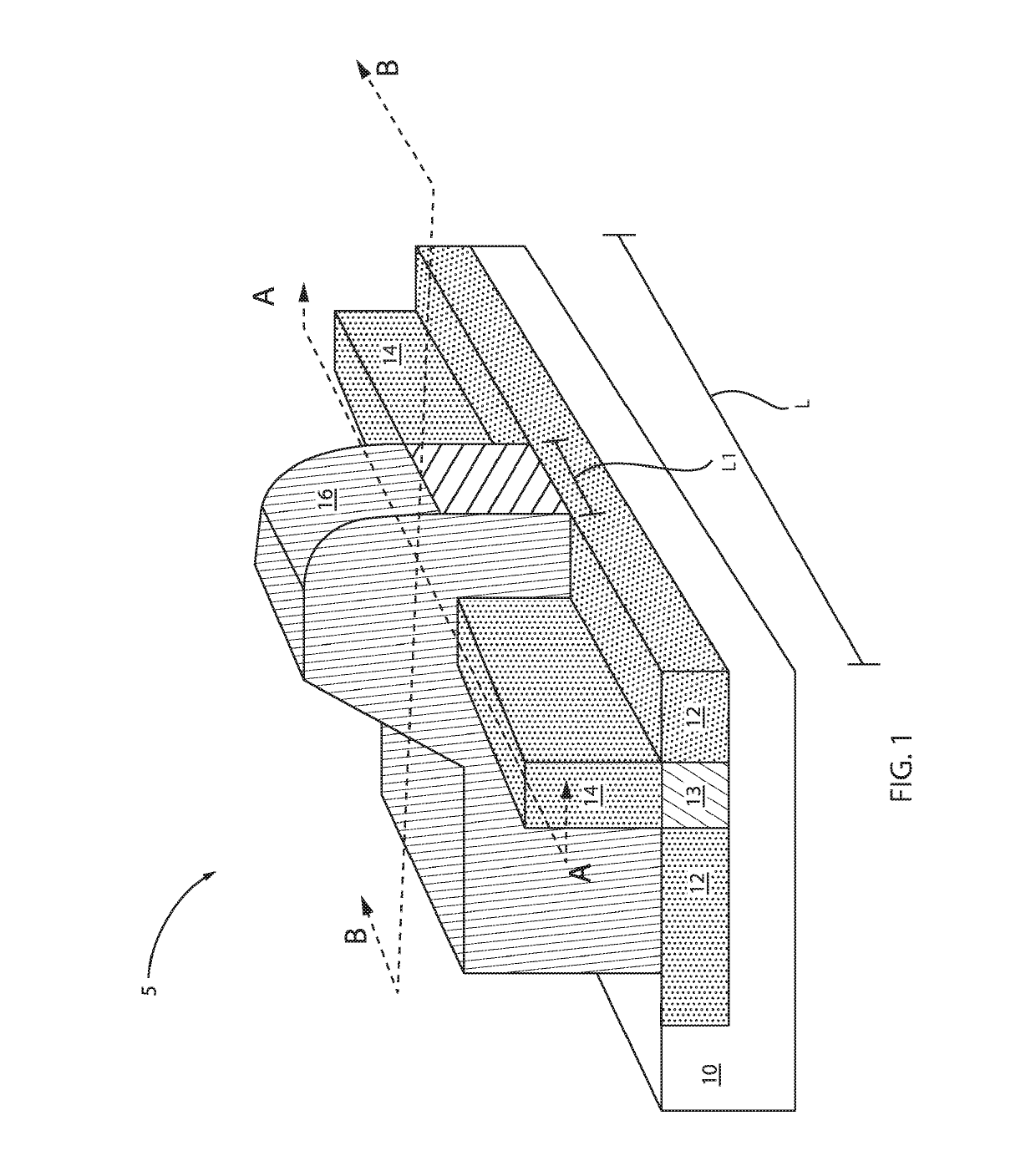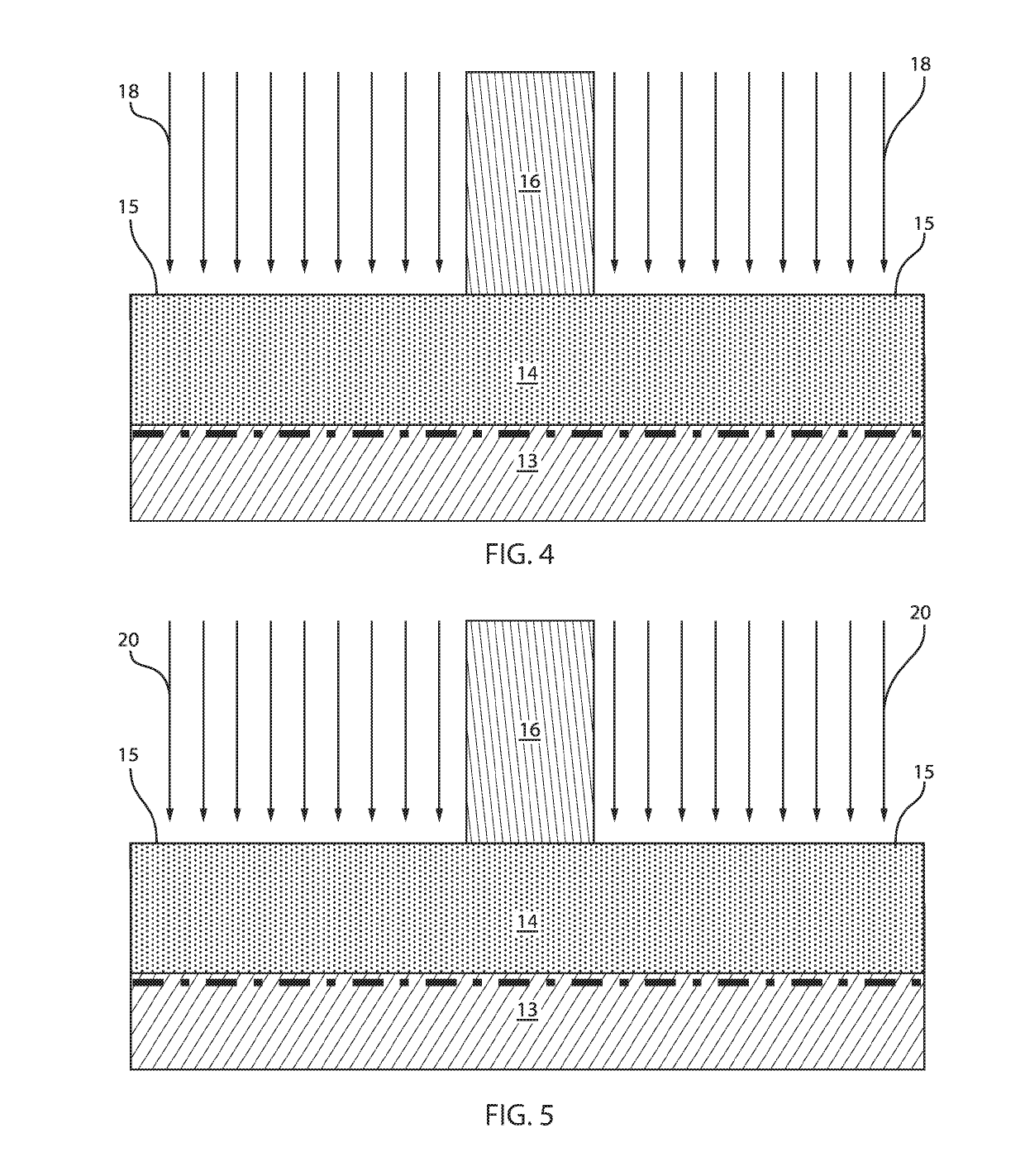Reducing series resistance between source and/or drain regions and a channel region
a technology of series resistance and drain region, applied in the field of semiconductor devices, can solve the problems of poor transistor gate control, inconvenient use, and inability to accurately place dopants and junctions, and achieve the effect of reducing the series resistance of transistors and increasing the lattice structure of materials
- Summary
- Abstract
- Description
- Claims
- Application Information
AI Technical Summary
Benefits of technology
Problems solved by technology
Method used
Image
Examples
Embodiment Construction
[0023]Embodiments in accordance with the present invention provide methods and devices for reducing resistance between source and / or drain regions and a channel region for a transistor. To minimize resistance in the source and / or drain regions, extension regions are doped to modify their chemical composition. In one example, the extension regions can be doped with at least two elements. The addition of such elements or dopants modifies a lattice structure of the extension region. The transistors can be, e.g., fin field effect transistors (FinFETs) or vertical field effect transistors (VFETs) or tunnel FETs or nanosheets.
[0024]Embodiments in accordance with the present invention provide methods and devices for adding or introducing or implanting gallium (Ga) and tin (Sn) to an extension region of a transistor at a temperature of about 320° C. or higher. The implantation can be implemented by, e.g., hot ion implantation techniques. For example, by adding Sn, the lattice structure of S...
PUM
 Login to View More
Login to View More Abstract
Description
Claims
Application Information
 Login to View More
Login to View More - R&D
- Intellectual Property
- Life Sciences
- Materials
- Tech Scout
- Unparalleled Data Quality
- Higher Quality Content
- 60% Fewer Hallucinations
Browse by: Latest US Patents, China's latest patents, Technical Efficacy Thesaurus, Application Domain, Technology Topic, Popular Technical Reports.
© 2025 PatSnap. All rights reserved.Legal|Privacy policy|Modern Slavery Act Transparency Statement|Sitemap|About US| Contact US: help@patsnap.com



